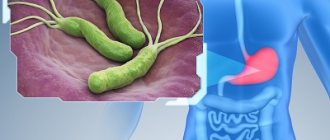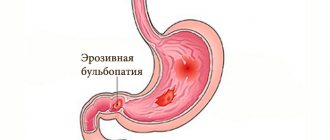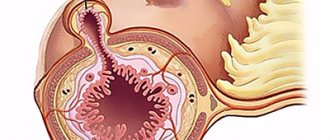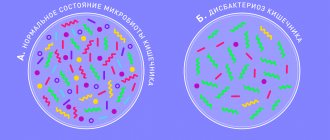Causes of hemoperitoneum in cats Signs Diagnosis Treatment Home care
Hemoperitoneum (hemoabdomen) is an accumulation of blood in the abdominal cavity, occurs after intra-abdominal bleeding, when blood accumulates in the space between the abdominal wall and the abdominal organs.
Hemoperitoneum is a potentially life-threatening situation. The abdominal cavity is a large space that can hold a significant amount of blood. At the same time, the abdominal muscles are stretched, and an increase in abdominal volume becomes obvious. An enlarged abdomen can cause discomfort or pain, leading to agitation and stress, and pressure on the diaphragm can interfere with breathing.
Rapid loss of blood into the abdominal cavity results in decreased tissue perfusion (blood supply) and a drop in blood pressure, which can cause shock. Loss of blood leads to anemia, mucous membranes turn pale. If such a patient is not given immediate veterinary attention, rapid blood loss can lead to death. However, gradual blood loss is more common, which allows the animal to receive the necessary help.
Chronic blood loss occurs more slowly and symptoms are less severe. With slow blood loss, some of the free blood from the abdominal cavity may be absorbed; thus, the animal will have a small volume of blood in the abdominal cavity. This situation may not seem like an emergency, but the animals have a severe primary illness. In these cases, it is extremely important to notice hemoperitoneum and make the correct diagnosis.
If the cat has normal blood clotting parameters, then bleeding into the abdominal cavity can stop on its own: blood clots form, which stop the bleeding. Sometimes cats lose consciousness due to sudden blood loss, and then spontaneously recover due to the body's compensatory abilities. Such animals may have periods of weakness followed by normal well-being. If blood clots are displaced (for example, when an animal moves), bleeding into the abdominal cavity may resume.
Clinical picture
The clinical picture depends on the nature of organ damage, the intensity of bleeding into the abdominal cavity and the amount of blood loss.
In acutely occurring G., a picture of acute anemia is observed: pallor of the skin and visible mucous membranes, thirst, cold sweat, adynamia, darkening of the eyes, dizziness, fainting, and there may be motor agitation; Due to painful irritation of the dome of the diaphragm that has gushed out blood, the patient tends to take a sitting position (the vanka-stand-up symptom), which reduces the pain. The pulse is frequent (up to 120-140 beats per minute), weak filling, blood pressure decreases. The abdomen participates in breathing to a limited extent, is soft and moderately painful on palpation, and there are symptoms of peritoneal irritation. In the sloping parts of the abdomen there is dullness of percussion sound, percussion is painful, bowel sounds cannot be heard. During a digital examination of the rectum, a protrusion of its wall may be detected; during a vaginal examination, the fornix is flattened and painful; the posterior fornix may bulge. When examining peripheral blood, there is a decrease in hemoglobin, the number of red blood cells, and the hematocrit value. In the initial stages of G.'s development, changes in peripheral blood are not pronounced. The more time has passed since the onset of bleeding, the more clearly the clinical symptoms of G. are revealed. When bleeding into the abdominal cavity from small vessels in the postoperative period, G. develops slowly, symptoms from the abdomen are often erased and difficult to detect against the background of changes associated with surgical trauma. With G., a frenicus symptom may be observed - pain in the area of the shoulder girdle and shoulder blade, often on the left, due to irritation of the endings of the sensory nerves of the diaphragm by blood pouring into the abdominal cavity (see Frenicus symptom).
Treatment
A patient with this defect requires emergency hospitalization in the abdominal surgery department. Therapy is carried out in several stages. If a person has very severe hemorrhage, hypovolemic shock needs to be stopped; doctors provide intensive therapy, namely:
- analeptics are administered;
- solutions and blood substitutes are transfused;
- a set of resuscitation measures is being carried out;
- The blood that has spilled into the peritoneum is reinfused.
If the victim is in a surgical hospital, the surgeon performs a laparotomy to identify the source of bleeding. If a person’s internal organs are injured, liver resection, splenectomy, and vascular ligation are practiced.
After the operation, hemostatic and antibacterial therapy, monitoring of blood counts, blood pressure, and pulse are prescribed.
Diagnosis
The diagnosis with a clear wedge picture is beyond doubt. When the wedge is erased, the phenomena of G. have diagnostic value: laparocentesis (see) with the introduction of a groping catheter and peritoneoscopy (see), as well as puncture of the posterior vaginal vault. The introduction of a “groping” catheter and examination of the blood obtained from the abdominal cavity make it possible to establish the nature of the bleeding - whether it continues or has stopped, this is judged by the Rouvilois-Gregoire test (see Hemothorax). Data on the specific gravity of blood are of great importance in determining the amount of blood loss. Surgical tactics in each specific case depend on these diagnostic techniques.
Patients with suspected G., before establishing a final diagnosis, require careful dynamic monitoring with measurement of pulse rate and blood pressure every 1-2 hours, determination of the amount of hemoglobin and the value of peripheral blood hematocrit. During the diagnostic process, painkillers and narcotics that mask the symptoms of an acute abdomen are contraindicated (see).
G. must be differentiated from retroperitoneal hematoma and hematoma of the anterior abdominal wall, in which there are no symptoms of free fluid in the abdominal cavity.
X-ray diagnosis of hemoperitoneum
aims to establish the presence of free fluid in the abdominal cavity. The main methods of investigation for G. are fluoroscopy and radiography of the abdominal cavity. Pneumoperitoneum (see), and even more so angiography of the vessels of the abdominal cavity are permissible only if it is necessary to preoperatively clarify the nature of damage to the abdominal or pelvic organs or to first locate a bleeding vessel. These studies can only be carried out if the patient’s condition is satisfactory, with appropriate equipment and specially trained personnel. In case of traumatic origin of G., it is necessary to examine other damaged organs. All rentgenol examinations should be carried out with maximum sparing of the patient, in a supine position, and when examining the pelvic area - in a semi-sitting position.
When fluoroscopy of the abdominal cavity in patients in the first hours after the development of gastrointestinal tract, there is a restriction in the respiratory excursions of the diaphragm, and at a later date, signs of intestinal paresis are revealed - swollen intestinal loops with levels of gas and liquid in them.
Diagrams of radiographs of the pelvic area with hemoperitoneum: a - with a small amount (about 150 ml) of blood; b - when the amount of blood is about 300 ml; 1 - pubic symphysis; 2 - sacrum; 3 - light shadow of the parietal fatty tissue of the pelvis; 4 - accumulation of blood.
On a survey radiograph, it is necessary to obtain an image of the subdiaphragmatic and lateral areas of the abdomen, as well as the pelvic area. Small amounts of blood, due to gravity, accumulate in sloping areas of the abdominal cavity and are detected radiographically in the form of characteristic areas of darkening (Fig., a).
A larger amount of fluid on plain radiographs of the abdominal cavity is determined in the form of wide bands of darkening in the area of the lateral sections with internal scalloped contours (Fig., b), as well as in the form of triangular, oval or polygonal shadows with vague contours between the intestinal loops swollen with gas (S. A. Reinberg). Lateroscopy in these cases reveals a symptom of intestinal floating (G. A. Zedgenidze, L. D. Lindenbraten, etc.). Radiography of the pelvic area is of great importance (for diagnosing small amounts of fluid). With peritoneography (see), it is possible to even more accurately determine the location and paths of distribution of small volumes of free fluid, the edges, being contrasted, evenly cover the surface of the abdominal organs, allowing them to obtain a clear X-ray image. Diagnostic pneumoperitoneum (see) with the introduction of 200-300 ml of gas also greatly facilitates the identification of a small amount of free fluid in the abdominal cavity due to the formation of a horizontal level at the border between liquid and gas.
G. X-ray must be differentiated from a retroperitoneal hematoma; the edges on a radiograph are usually revealed by the expansion of the shadow and the disappearance of a clear contour of the lumbar muscle on one side.
Description of the disease
In medicine, hemoperitoneum is described as the presence of blood in the abdominal cavity between the parietal and visceral layers. Its other name is laparohemorrhage, or intra-abdominal bleeding. As a rule, this type of bleeding develops very quickly, over a few hours, sometimes even minutes, its maximum incubation period is 3 days. The severity of hemoperitoneum is divided into 3 degrees:
- Easy. Characterized by a satisfactory general condition, slight dizziness with preservation of consciousness, pulse up to 100 beats per minute, hemoglobin not lower than 110.
- Moderate. The general condition can be called moderate, although consciousness is preserved, the skin becomes pale and cold sweat appears, the pulse quickens to 110-120 beats per minute, hemoglobin drops to 80.
- Heavy. Retardation of consciousness appears, the person suddenly becomes pale, breaks out in a cold sweat, feels wild thirst, the pulse becomes weak and frequent, about 130-140 beats per minute, hemoglobin drops below 80.
Forecast
The prognosis for G. is always serious; it depends on the nature of the injury or disease that caused the development of G., the amount of blood loss and the period that elapsed from the beginning of G.’s development to the operation.
Undiagnosed G. often becomes infected and leads to the development of diffuse or limited peritonitis (see).
See also Bleeding.
Bibliography:
Zedgenidze G. A. and Lindenbrate N L. D. Emergency X-ray diagnostics, L., 1957; Littmann I. Abdominal surgery, trans. from German, Budapest, 1970; Emergency surgery, ed. N. I. Blinova and B. M. Khromova, L., 1970; Experience of Soviet medicine in the Great Patriotic War of 1941-1945, vol. 12, M., 1949; P and p-to about A. S. X-ray diagnosis of early complications after gastrectomy # M., 1958, bibliogr.; F g iman n- D ah 1 J. Roentgen examination in acute abdominal diseases, Springfield, 1951
G. A. Pokrovsky; L. M. Freidin (rent.).
Home care
Hemoperitoneum can be an emergency and veterinary attention should be sought as soon as possible. Minimize stress until you can get to the veterinary clinic, keep the animal warm, and ensure peace. If traumatic injury is suspected, be careful when moving your pet as spinal injuries or fractures may be present.
(c) Veterinary center for the treatment and rehabilitation of animals “Zoostatus”. Varshavskoe highway, 125 building 1. tel. 8 (499) 372-27-37
conclusions
The main thing to remember is that the nail trimming procedure should be regular. Veterinarians recommend doing this once a month. The pet will not like this process at first, but over time he will get used to it when he realizes that it does not cause him pain.
It is also worth noting that regular nail trimming helps strengthen blood vessels. And then the problem of how and how to stop a dog’s bleeding after cutting its nails will disappear by itself.
Sources:
- www.belanta.vet
- zoostatus.ru
- fb.ru
Antibacterial soap
How to stop a dog's nail from bleeding using soap? This does not require complex manipulations. It is enough to take the animal’s paw and press the soap with the damaged claw.
During this procedure, the wound is closed with a kind of plug, which disappears on its own after 3-4 hours. To form it, the claw must be immersed in soap by approximately 2-3 mm. Then fix this position for 3-4 minutes.
It is important to hold the claw clearly perpendicular when pressing the soap. The dog may not like this action and will begin to struggle, so be sure to hold it tightly during the procedure. It is recommended to remove soap from the claw carefully, since this area is very sensitive for the animal.
[custom_ads_shortcode2]
Styptic pencil
How to stop bleeding from a dog's nail using a special pencil? Sequencing:
- Prepare the dog's paw.
- Wet the tip of the pencil.
- Secure the paw with the damaged claw.
- Place a pencil into the wound and hold it in this position for 2 minutes.
If the claw continues to bleed, the procedure can be repeated. However, the second time you will need to hold the pencil longer - up to 5 minutes. If this does not help, then you should immediately contact the clinic.
At the moment, a hemostatic pencil is considered the most effective means for stopping bleeding. It is recommended by veterinarians. It is sold freely in specialized pharmacies.
[custom_ads_shortcode1]
How to Transport Your Dog to the Vet If the Bleeding Won't Stop
In most cases, bleeding after nail trimming does not pose a danger to the animal. However, there are situations when the methods described above do not help. The owners begin to worry about the pet and go to the veterinary clinic.
It is advisable that the dog does not walk on its own, as it has an open wound on its paw. An infection can easily get there, which will significantly worsen the animal’s condition. So, what is the correct way to transport your dog to the clinic for a veterinary appointment?
- The first step is to prepare a cotton swab and place it on the wound.
- Next, bandage the paw. To prevent the bandage from falling off along the way, it is advisable to use self-adhesive tape to secure it. There is no need to over-tighten the paw. This may cause discomfort to the animal, and it will try to pull off the bandage. Also, with tight bandaging, the painful spasm intensifies. This must definitely be taken into account.
- A dog in this state may be nervous, so a sedative will not hurt it.
[custom_ads_shortcode3]
Types of bleeding in dogs and causes of their occurrence
The causes of the pathology can be completely different. Physical injury and other factors can cause external or internal bleeding in dogs. Depending on the causes and places of occurrence, there are different types of hemorrhage:
- Nasal. They appear most often as a result of mechanical trauma to the inner or outer part of the nose. Bleeding can be of varying strength: flow out in a thin stream, in large drops. External symptoms usually shock the owner and cause confusion. But in order to provide the right help, you need to pull yourself together and apply the following algorithm of actions:
- Do not panic yourself and calm your pet. It is necessary to limit any body movements of the dog, exclude active behavior and physical activity. It is important to ensure rest, since any movement increases blood pressure, which increases bleeding. This makes it difficult to successfully stop it.
- Provide first aid to the dog: prepare and apply a cold compress to the head or bridge of the nose. Keep it until improvement is visible.
- Once the bleeding stops, it is important to contact your veterinarian. A specialist will help determine the true cause of dangerous symptoms.
The last action is important, since the cause can be not only physical trauma to the nose, but also other factors: polyps in the nasal cavity, tumors, stuck objects. Or more serious ones, for example, inflammation in the pancreas. Internal reasons invisible to the owner pose a threat to the pet’s life. Therefore, timely action is important even after the blood flow has been eliminated.
- In pulmonary structures . This is a complex internal pathology that has clear external manifestations. Here you cannot do without the help of a veterinarian, and you need to act quickly, urgently, provide the right assistance in order to eliminate complications and death for the dog. The causes of pulmonary hemorrhage are associated with any mechanical damage to the chest. This can be the result of being in a car accident, when the dog is hit by a vehicle or hit hard, falling onto hard objects, or other physical injuries. Another reason is chronic lung diseases. External symptoms are clearly noticeable: small amounts of blood periodically flow out of the pet’s nose or mouth, and a cough with bloody discharge occurs. If this happens, you must immediately take the following steps:
- The most important thing is to completely immobilize the animal and immediately call a veterinarian.
- If the clinic is far away, then there is no need to waste time. While waiting for the doctor, it is necessary to stop the bleeding. Use the hemostatic medicine Vikasol with vitamin K, which helps increase blood clotting. It acts on internal processes in the body, therefore it is effective in combating bleeding.
- Then, you need to tightly wrap the dog's chest with a suitable cloth, tight elastic bandage or other means. Then pour a solution of calcium chloride into your mouth (one dose is 10 ml). The medicine is necessary to normalize the transmission of nerve impulses, heart function and blood clotting. Blood loss has a negative impact on your pet's body. Therefore, it is useful to give regular drops for the heart.
- After 6 hours, you need to repeat these steps in order to stabilize the condition as much as possible and take the dog to the veterinarian.
Contacting a veterinary clinic is mandatory, as immediate treatment is required to save a life.
- From the mouth . It is a consequence of internal diseases or injuries. Pathologies of the mucous membrane or other parts of the oral cavity can cause such symptoms. Jaw injuries, dental diseases, and fractures also provoke bleeding. Here you need an urgent visit to the veterinary clinic.
- Internal from the intestines or stomach . The cause of hemorrhage of this type can be inflammation of the walls of organs, physical damage caused by the ingestion of various objects. Bleeding in the intestines usually occurs due to severe trauma, blows and other factors. The pathology is accompanied by obvious symptoms that need to be responded to immediately after their appearance. The first sign is a change in the characteristics of feces. At the initial stage of the disease, feces become tar-like in structure. Already with such changes you need to contact a veterinarian. A more advanced stage of bleeding in the stomach and upper gastrointestinal tract is accompanied by other signs: the dog asks to go to the toilet unusually often, the feces become black. Stools are bright red if pathologies occur in the colon and rectum. If these signs are present, you must:
- Provide complete rest to the animal and immediately call a veterinarian to your home.
- Relieve his pain with a cold compress.
- Do not perform any procedures until a specialist arrives (enemas, rinses, eating, drinking and other actions are not needed).
- Stool with bloody discharge. The symptom can occur not only due to bleeding in the intestines and stomach. The reasons may be: mechanical damage to the anal passage, hemorrhoids, the presence of tumor formations in the rectum or its prolapse, pathologies of the mucous membranes. In such cases, blood discharge will be constant and in significant volumes. If bloody stool appears irregularly, not profusely, then the cause may be constipation or a long absence of the urge to go to the toilet. Then you need to reconsider the dog’s diet, do not give him bones, as they provoke constipation.
- Urine with blood in a dog appears with various diseases of the kidneys, bladder and urinary system as a whole, with progressive pathologies. Symptoms of abnormalities are manifested not only by blood discharge, but also by other signs. The dog experiences frequent urges to go to the toilet, feels pain and discomfort during the natural process, which is evident from the external behavior of the animal. If the owner notices such changes, there is no need to take any action to treat the problem on their own. All a pet owner can do is consult a doctor. The veterinarian will be able to draw the correct conclusion if the picture is not blurred by the action of any drugs or manipulations. Therefore, it is important not to do anything, but simply call a doctor.
- Uterine bleeding is provoked by a number of different factors: tumor neoplasm, injury, prolonged progressive inflammation. Other causes may be hormonal imbalance, inflammation of the inner lining of the uterus (endometritis). Persistent complications after childbirth can also cause hemorrhage. In a healthy female dog, secretion is released only before giving birth, and is a normal sign of a natural physiological process. After childbirth, lochia, a greenish-brown substance, comes out of the vagina. Under normal conditions, this should last longer than 1-2 days. If bleeding occurs after childbirth, this is a sign of serious pathologies and is not normal. This symptom means that the uterus is currently very filled with blood, there are no contractions, and any mechanical damage can lead to heavy bleeding. Therefore, you should immediately contact your veterinarian. There may also be internal bleeding of the uterus, in which there is no external discharge. You can determine it by the behavior of the dog. The animal is lethargic, apathetic, refuses food and drink for a long time.











